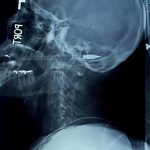I always welcome any questions, comments or requests you may have! However, if you comment anonymously, I have no way or responding to you directly. Every once in a while, I’ll take a moment to answer any comments / questions I’ve received.
Regarding this post on performing retrograde urethrogram from 7 months ago, shadowboxer said:
“tried this. total flail. the ky makes the catheter tip syringe slide out of the foley. The contrast becomes too dilute. The material is too thick and when enough pressure to push it through the foley is placed, the foley, since it is now so slippery with the ky, flies out and gooey contrast sprayed all over the flouro tower. what a mess!!”
Bottom line: I reread my post, and I must have had a senior moment. I do not recommend using the foley catheter! The slip tip syringe goes straight into the meatus, and you then clamp the tip of the penis firmly with your fingers. Here’s how it should read, with the corrected section in bold:
The technique is simple. The following items are needed:
- A urine specimen cup
- A tube of KY jelly (not the little unit dose packs)
- A bottle of renografin or ultravist contrast
- A 50-60 cc Toomey syringe (slip-tip)
- A fluoroscopy suite
Pour 25cc of contrast and 25cc of KY jelly in the specimen cup, cap it and shake well. Draw the contrast jelly up into the syringe. Place the tip of the syringe directly into the urethral meatus, make a circle with your thumb and index finger, and use that to clamp the end of the penis around the slip-tip. Pull the penis toward yourself to keep your hand away from the center of the xray field. Slowly inject all the contrast, watching the contrast column on the fluoro screen. Once there is easy flow into the bladder, you can stop the study. If you see extravasation into the soft tissues, stop the study and call Urology.
The key to this technique is the 50:50 KY/contrast mix, which is thin enough to flow but thick enough to keep from spraying all over. Also, the finger clamp technique is important, because the contrast will ooze out if you don’t do it tightly. However, if you’ve pulled the penis over to the side, any leakage will not contaminate the xray field.
I’ve personally used this technique about 50 times and have never had a problem.
Sorry, shadowboxer, hope you’ll try again with my revised / corrected technique. If you do, please let me know.


